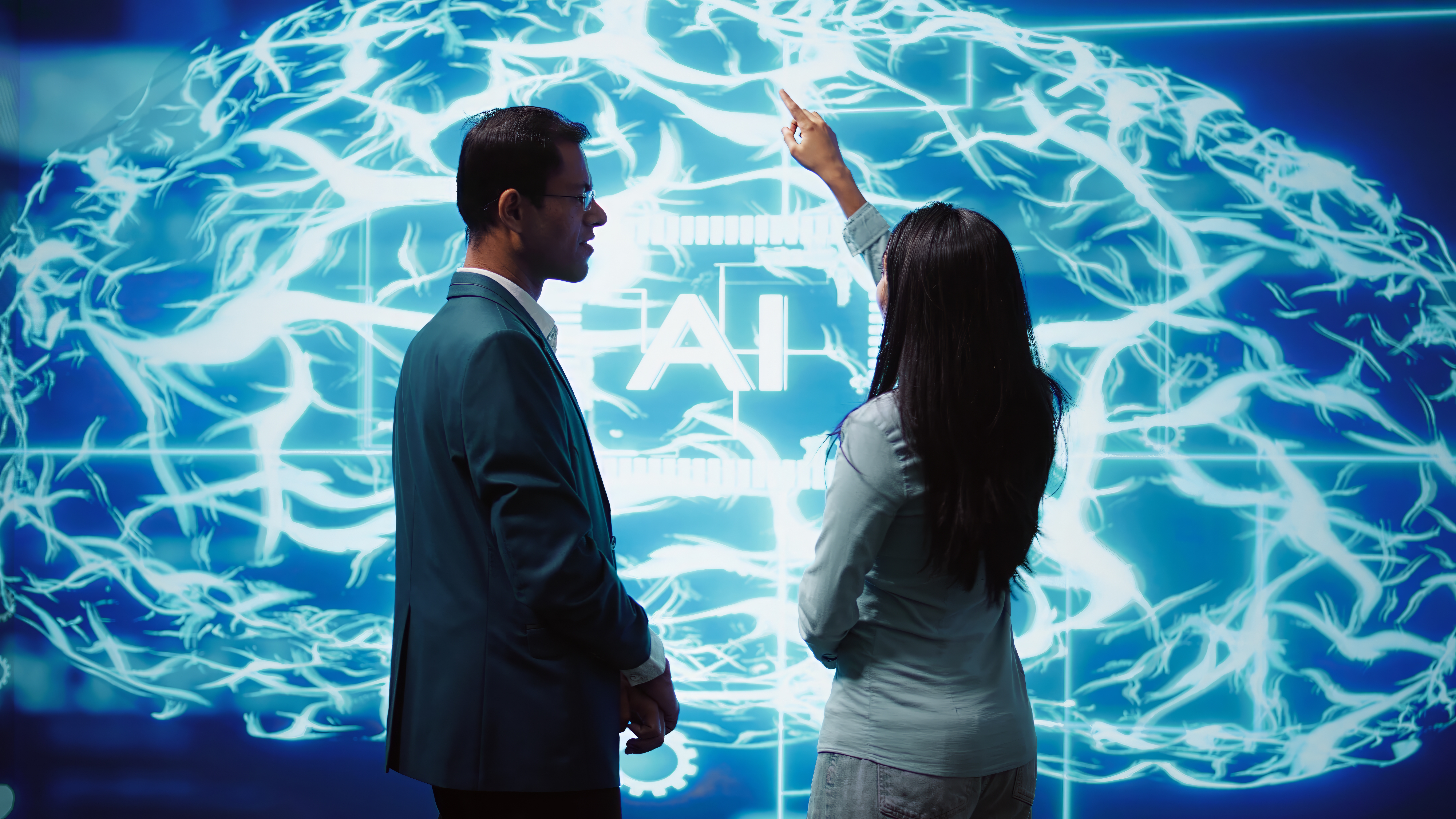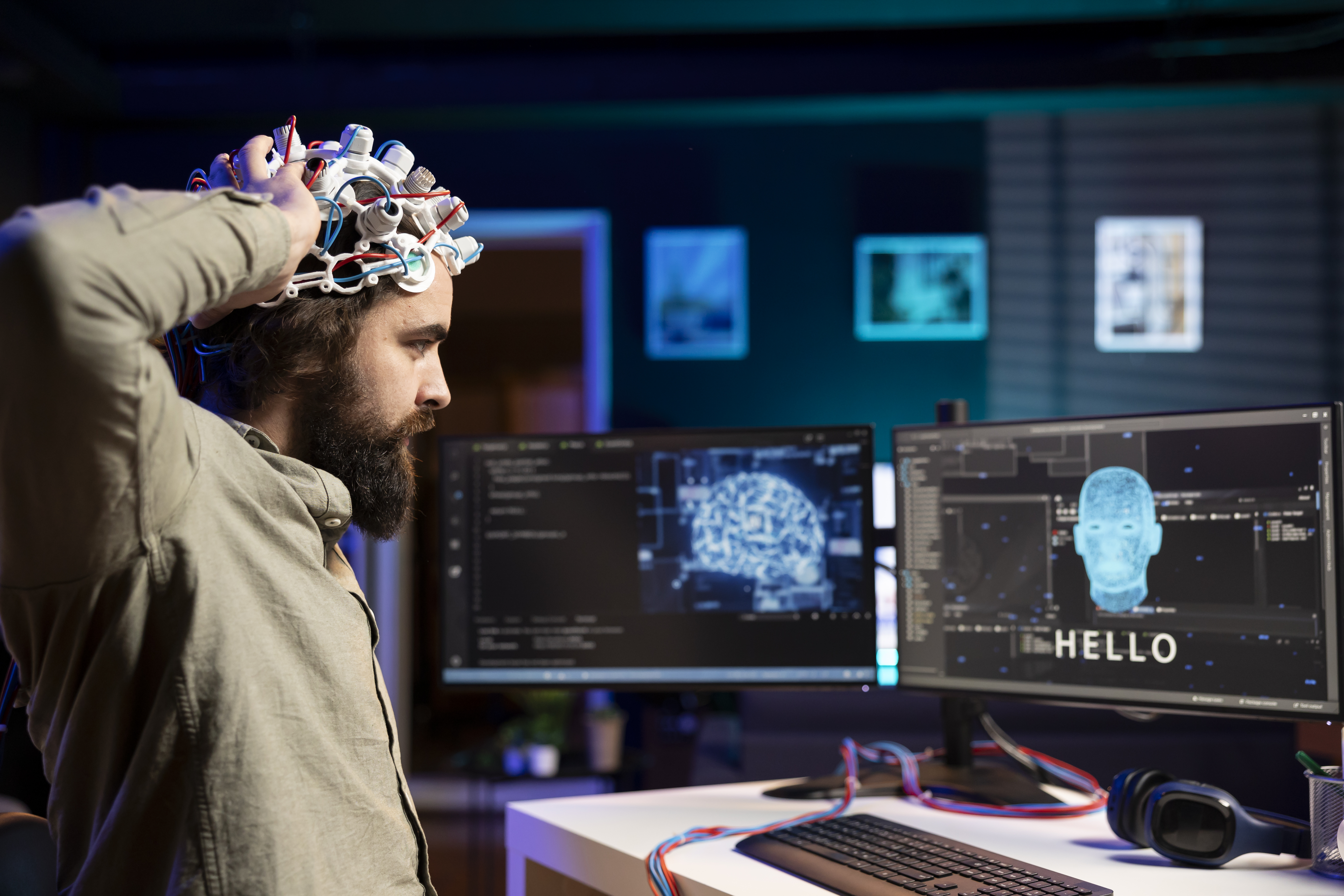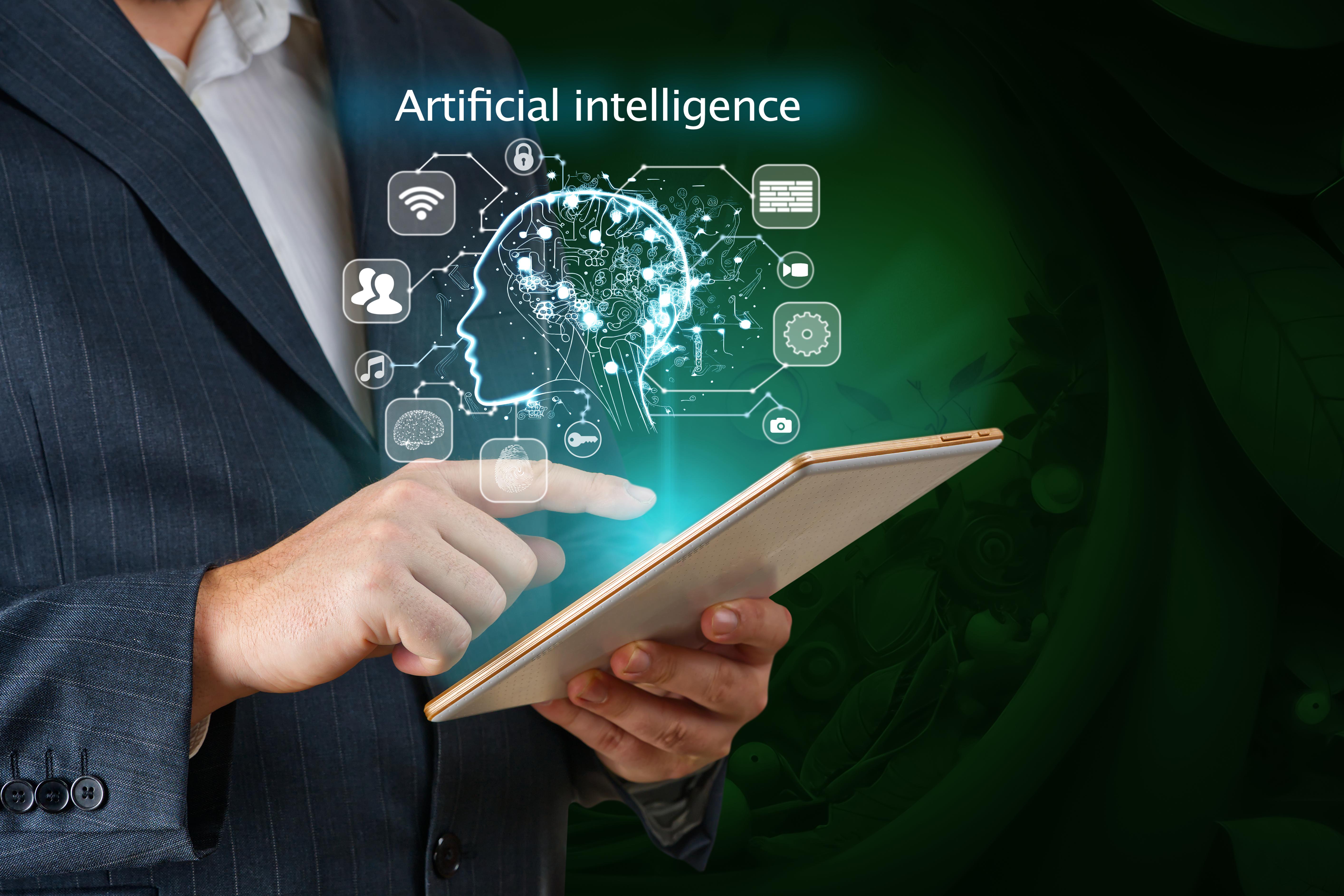10 Ways AI Has Radically Changed Since Its 1956 Inception
The concept of artificial intelligence (AI) has captured human imagination for decades, tracing its roots back to the mid-20th century. It was in 1956 at the Dartmouth Conference that AI was officially born, with scientists like John McCarthy, Marvin Minsky, Nathaniel Rochester, and Claude Shannon envisioning machines that could simulate human intelligence. This groundbreaking meeting laid the foundational framework for AI, setting the stage for a technological revolution. Over the decades, AI has undergone radical transformations, driven by advancements in computing power, data availability, and algorithmic innovation. Today, AI is not just a tool but a partner in creativity and problem-solving, capable of learning, adapting, and even predicting future trends. This article embarks on a journey through 10 fascinating insights into the evolution of AI, exploring how it has transformed from a theoretical concept into a practical force reshaping our world.
1. The Foundational Decades: 1956-1980

The period between 1956 and 1980 marked the foundational decades of AI, characterized by both optimism and challenges. Following the Dartmouth Conference, the field witnessed a surge of interest and funding, with researchers eager to explore the potential of intelligent machines. During these years, AI research primarily focused on developing algorithms that could mimic human reasoning and problem-solving. Early AI systems, such as the Logic Theorist and the General Problem Solver, demonstrated the potential of machines to perform tasks typically associated with human intelligence. These programs laid the groundwork for more advanced AI systems, showcasing the possibilities of symbolic reasoning and heuristic search. Despite the initial enthusiasm, the foundational decades were not without obstacles. The limitations of computing power and the lack of sufficient data posed significant challenges to AI research. The optimism of the early years gradually gave way to periods of stagnation, often referred to as "AI winters," where progress slowed, and funding dwindled. During these times, researchers faced skepticism from the broader scientific community, questioning the feasibility of achieving true artificial intelligence. However, these challenges also served as a catalyst for innovation, pushing researchers to explore new approaches and methodologies. The foundational decades were instrumental in shaping the trajectory of AI, setting the stage for future advancements. The development of expert systems in the 1970s marked a significant milestone, demonstrating the potential of AI to solve complex problems in specific domains. These systems, such as MYCIN, which was designed to diagnose bacterial infections, showcased the practical applications of AI in fields like medicine and engineering. The foundational decades laid the groundwork for the subsequent evolution of AI, highlighting the importance of perseverance and innovation in overcoming challenges and driving progress.
2. The Rise of Machine Learning: 1980-2000

The period from 1980 to 2000 witnessed the rise of machine learning, a paradigm shift that transformed the field of AI. Unlike earlier AI systems that relied heavily on symbolic reasoning, machine learning introduced a new approach focused on data-driven algorithms. This shift was fueled by advancements in computational power and the availability of large datasets, enabling machines to learn from experience and improve their performance over time. The development of neural networks, inspired by the structure and function of the human brain, played a pivotal role in this transformation, allowing AI systems to recognize patterns and make predictions with unprecedented accuracy. Machine learning opened new avenues for AI research, leading to breakthroughs in various domains. The introduction of algorithms such as decision trees, support vector machines, and clustering techniques expanded the capabilities of AI systems, enabling them to tackle complex problems in fields like finance, healthcare, and natural language processing. The rise of machine learning also marked the beginning of AI's integration into everyday life, with applications ranging from credit scoring and fraud detection to speech recognition and recommendation systems. This period laid the foundation for the development of more sophisticated AI systems, setting the stage for the next wave of innovation. The rise of machine learning also brought about new challenges and considerations. The reliance on large datasets raised concerns about data privacy and security, highlighting the need for robust ethical frameworks to guide AI development. Additionally, the complexity of machine learning algorithms posed challenges in terms of interpretability and transparency, prompting researchers to explore methods for making AI systems more understandable and accountable. Despite these challenges, the rise of machine learning was a turning point in the evolution of AI, demonstrating the power of data-driven approaches and setting the stage for future advancements in the field.
3. The Advent of Deep Learning: 2000-2010

The decade from 2000 to 2010 marked the advent of deep learning, a revolutionary approach that propelled AI to new heights. Building on the foundations of machine learning, deep learning introduced the concept of neural networks with multiple layers, known as deep neural networks. This advancement allowed AI systems to process vast amounts of data and extract complex features, enabling them to perform tasks with human-like accuracy. The resurgence of interest in neural networks was driven by the availability of large datasets, advancements in computing power, and the development of efficient training algorithms, such as backpropagation. Deep learning revolutionized the field of AI, leading to breakthroughs in areas such as image and speech recognition. The development of convolutional neural networks (CNNs) and recurrent neural networks (RNNs) enabled AI systems to excel in tasks that were previously considered challenging, such as object detection, language translation, and natural language understanding. The success of deep learning models, such as AlexNet and Google’s DeepMind, demonstrated the potential of AI to surpass human performance in specific domains, garnering widespread attention and investment from academia and industry alike. The advent of deep learning also highlighted the importance of collaboration and interdisciplinary research in advancing AI. The integration of insights from fields such as neuroscience, computer science, and statistics played a crucial role in the development of deep learning techniques. Additionally, the open-source movement, with platforms like TensorFlow and PyTorch, facilitated the sharing of knowledge and resources, accelerating the pace of innovation in the field. Despite the challenges of computational cost and the need for large amounts of labeled data, deep learning continues to be a driving force in the evolution of AI, pushing the boundaries of what is possible and reshaping industries worldwide.
4. The AI Boom: 2010-Present

The period from 2010 to the present has witnessed an unprecedented AI boom, characterized by rapid advancements and widespread adoption across various sectors. The proliferation of AI technologies has been driven by the convergence of several factors, including the exponential growth of data, improvements in computational power, and the maturation of machine learning and deep learning techniques. This era has seen AI transition from a niche research area to a mainstream technology, with applications ranging from autonomous vehicles and virtual assistants to personalized medicine and smart cities. The AI boom has been fueled by significant investments from both the public and private sectors, with tech giants like Google, Amazon, and Microsoft leading the charge in AI research and development. The democratization of AI, facilitated by open-source platforms and cloud-based services, has enabled organizations of all sizes to leverage AI technologies, driving innovation and competition. This period has also witnessed the rise of AI startups, developing cutting-edge solutions and disrupting traditional industries, from finance and healthcare to retail and entertainment. Despite the rapid advancements, the AI boom has also raised important ethical and societal considerations. The potential for AI to exacerbate existing inequalities, infringe on privacy, and perpetuate biases has prompted calls for responsible AI development and governance. Policymakers, researchers, and industry leaders are increasingly focused on establishing frameworks and guidelines to ensure that AI technologies are developed and deployed in a manner that is ethical, transparent, and accountable. As AI continues to evolve, the challenge lies in harnessing its potential for societal benefit while addressing the complex ethical and regulatory issues that arise.
5. AI in Healthcare: Revolutionizing Medicine

AI is revolutionizing the healthcare industry, offering new possibilities for diagnosis, treatment, and patient care. The integration of AI technologies into healthcare systems has the potential to enhance the accuracy and efficiency of medical processes, improving patient outcomes and reducing costs. AI-powered tools, such as diagnostic algorithms and predictive analytics, are being used to analyze medical images, identify patterns in patient data, and predict disease progression. These advancements are enabling healthcare professionals to make more informed decisions, leading to earlier interventions and better patient outcomes. One of the most significant impacts of AI in healthcare is its ability to personalize medicine. By analyzing genetic, environmental, and lifestyle factors, AI systems can develop tailored treatment plans for individual patients, optimizing the efficacy of therapies and minimizing adverse effects. AI is also playing a crucial role in drug discovery, accelerating the development of new treatments by identifying potential drug candidates and predicting their effectiveness. This has the potential to revolutionize the pharmaceutical industry, reducing the time and cost associated with bringing new drugs to market. The integration of AI in healthcare also raises important ethical and regulatory considerations. Ensuring the privacy and security of patient data is paramount, as is addressing potential biases in AI algorithms that could lead to disparities in care. Additionally, the deployment of AI in healthcare requires collaboration between technologists, healthcare professionals, and policymakers to ensure that AI systems are developed and used in a manner that is ethical, transparent, and aligned with the needs of patients and healthcare providers. As AI continues to transform the healthcare landscape, it holds the promise of improving patient care and advancing medical science, paving the way for a healthier future.
6. AI in Finance: Transforming the Financial Landscape

AI is transforming the financial industry, reshaping the way financial institutions operate and interact with their customers. The integration of AI technologies into financial systems has the potential to enhance efficiency, reduce risk, and improve customer experience. AI-powered tools, such as algorithmic trading, fraud detection, and risk management systems, are being used to analyze vast amounts of data, identify patterns, and make predictions with remarkable accuracy. These advancements are enabling financial institutions to make more informed decisions, optimize investment strategies, and mitigate risks. One of the most significant impacts of AI in finance is its ability to enhance customer experience. AI-powered chatbots and virtual assistants are being used to provide personalized financial advice, answer customer queries, and streamline customer service processes. These technologies are improving customer satisfaction by providing quick and accurate responses, reducing wait times, and offering tailored financial solutions. AI is also playing a crucial role in financial inclusion, enabling underserved populations to access financial services through innovative solutions such as mobile banking and digital lending platforms. The integration of AI in finance also raises important ethical and regulatory considerations. Ensuring the transparency and accountability of AI systems is crucial, as is addressing potential biases in AI algorithms that could lead to discriminatory practices. Additionally, the deployment of AI in finance requires collaboration between technologists, financial institutions, and regulators to ensure that AI systems are developed and used in a manner that is ethical, transparent, and aligned with the needs of customers and the financial industry. As AI continues to transform the financial landscape, it holds the promise of enhancing financial services and driving economic growth, paving the way for a more inclusive and efficient financial system.
7. AI in Transportation: Driving the Future of Mobility

AI is driving the future of transportation, offering new possibilities for mobility and reshaping the way we travel. The integration of AI technologies into transportation systems has the potential to enhance safety, reduce congestion, and improve the efficiency of transportation networks. AI-powered tools, such as autonomous vehicles, traffic management systems, and predictive maintenance solutions, are being used to analyze vast amounts of data, optimize routes, and predict maintenance needs. These advancements are enabling transportation systems to operate more efficiently, reducing travel times and improving the overall experience for passengers. One of the most significant impacts of AI in transportation is its potential to enhance safety. Autonomous vehicles, equipped with advanced sensors and AI algorithms, are capable of detecting and responding to obstacles, pedestrians, and other vehicles, reducing the risk of accidents. AI is also playing a crucial role in traffic management, enabling cities to optimize traffic flow, reduce congestion, and improve air quality. These technologies are transforming the way we travel, offering new possibilities for mobility and reshaping the transportation landscape. The integration of AI in transportation also raises important ethical and regulatory considerations. Ensuring the safety and reliability of AI systems is paramount, as is addressing potential biases in AI algorithms that could lead to disparities in mobility access. Additionally, the deployment of AI in transportation requires collaboration between technologists, transportation authorities, and policymakers to ensure that AI systems are developed and used in a manner that is ethical, transparent, and aligned with the needs of passengers and transportation providers. As AI continues to drive the future of mobility, it holds the promise of enhancing transportation systems and improving the way we travel, paving the way for a more connected and sustainable future.
8. AI in Education: Enhancing Learning and Teaching

AI is enhancing the education sector, offering new possibilities for learning and teaching. The integration of AI technologies into educational systems has the potential to personalize learning, improve student outcomes, and support educators in their teaching efforts. AI-powered tools, such as adaptive learning platforms, intelligent tutoring systems, and automated grading solutions, are being used to analyze student data, identify learning gaps, and provide personalized feedback. These advancements are enabling educators to tailor their teaching methods to individual student needs, enhancing the learning experience and improving student outcomes. One of the most significant impacts of AI in education is its ability to personalize learning. By analyzing student data, AI systems can develop tailored learning plans, optimizing the learning process and improving student engagement. AI is also playing a crucial role in supporting educators, providing tools and resources to enhance teaching methods and streamline administrative tasks. These technologies are transforming the education landscape, offering new possibilities for learning and teaching and reshaping the way we educate future generations. The integration of AI in education also raises important ethical and regulatory considerations. Ensuring the privacy and security of student data is paramount, as is addressing potential biases in AI algorithms that could lead to disparities in educational outcomes. Additionally, the deployment of AI in education requires collaboration between technologists, educators, and policymakers to ensure that AI systems are developed and used in a manner that is ethical, transparent, and aligned with the needs of students and educators. As AI continues to enhance the education sector, it holds the promise of improving learning and teaching, paving the way for a more personalized and effective education system.
9. AI and Ethics: Navigating the Moral Maze

As AI technologies continue to evolve and permeate various sectors, navigating the ethical implications becomes increasingly critical. The rapid advancement of AI presents a complex moral maze, raising questions about privacy, bias, accountability, and the broader societal impact of intelligent machines. One of the primary ethical concerns is the potential for AI to infringe on individual privacy. AI systems often rely on vast amounts of data to function effectively, raising concerns about how this data is collected, stored, and used. Ensuring that AI technologies are developed and deployed in a manner that respects individual privacy is paramount, requiring robust data protection measures and transparent data practices. Another significant ethical consideration is the potential for bias in AI algorithms. AI systems are only as good as the data they are trained on, and if this data is biased, the resulting AI systems can perpetuate and even exacerbate existing inequalities. Addressing bias in AI requires a concerted effort to ensure that data used in AI development is representative and unbiased, as well as the implementation of fairness and accountability measures in AI algorithms. Additionally, the deployment of AI in decision-making processes raises questions about accountability and transparency, particularly when AI systems are used in high-stakes areas such as criminal justice, healthcare, and finance. Navigating the ethical implications of AI requires collaboration between technologists, ethicists, policymakers, and society at large. Establishing ethical frameworks and guidelines for AI development and deployment is crucial to ensure that AI technologies are used in a manner that is ethical, transparent, and aligned with societal values. As AI continues to evolve, addressing these ethical considerations is essential to harnessing the potential of AI for societal benefit while mitigating potential risks and challenges.
10. The Future of AI: Opportunities and Challenges

As we look to the future, AI holds immense potential to transform society and drive innovation across various sectors. The continued advancement of AI technologies presents numerous opportunities, from enhancing productivity and efficiency to enabling new forms of creativity and problem-solving. AI has the potential to address some of the world's most pressing challenges, from climate change and healthcare to education and economic development. The integration of AI into various sectors offers the promise of improved outcomes and enhanced quality of life, paving the way for a more connected and sustainable future. However, the future of AI also presents significant challenges that must be addressed to fully realize its potential. Ensuring that AI technologies are developed and deployed in a manner that is ethical, transparent, and accountable is paramount. This requires addressing issues such as data privacy, algorithmic bias, and the broader societal impact of AI. Additionally, the rapid advancement of AI technologies presents challenges in terms of regulation and governance, requiring collaboration between technologists, policymakers, and society to establish frameworks and guidelines for responsible AI development and deployment.
The journey of AI is far from over, with new advancements and breakthroughs on the horizon. The future of AI holds immense potential for societal benefit, offering new possibilities for creativity, problem-solving, and progress. However, realizing this potential requires collaboration between technologists, policymakers, and society at large to address the complex challenges and ethical considerations that arise. By embracing the AI revolution and navigating these opportunities and challenges, we can harness the power of AI to create a better future for all, paving the way for a more connected, sustainable, and equitable world.







